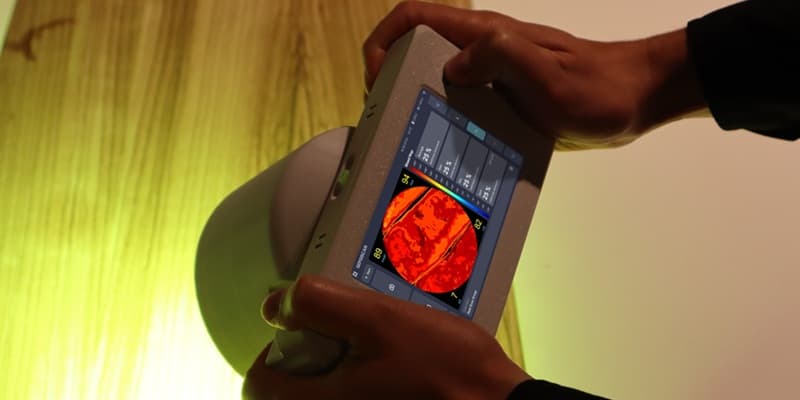Revolutionising the Diagnosing of Sepsis: A New Solution offered by a Latvian Start-Up

Attēls: Sepsiscan
Sepsis, which is the body’s extreme reaction to an infection, is a global issue and it carries grave consequences: approximately 49 million cases are recorded around the world every year with about a fifth of these leading to a lethal outcome. Even though modern medicine has made significant progress, diagnosing sepsis is still difficult and its belated identification significantly reduces the patient’s prospects for survival. Sepsiscan, a medical technology start-up founded in Latvia two years ago, is offering an innovative solution that could change the playing field in diagnosis, treating and monitoring sepsis.
Didzis Rūtītis, co-founder and CEO of the company, emphasises that sepsis is a condition which in this day and age ought to be diagnosed much earlier to thus reduce patient mortality. In response to requests by physicians treating sepsis patients for help in addressing this issue, researchers from the University of Latvia began developing a solution, and, as a spin-off from the university, Sepsiscan is now further improving the technology – a special device that allows for early detection of sepsis symptoms as well as monitoring recovery of sepsis patient by analysing microcirculation of the blood and oxygen saturation levels. The device is primarily intended to be used in the intensive care units of hospitals where it provides doctors and medical staff with valuable information about changes in a patient’s condition.
While there are already devices on the market which help assess microcirculation, they have failed to become an industry standard in healthcare. Sepsiscan is further distinguished by its specific focus on sepsis patients whereas the closes competitors are more oriented towards diabetics and assessing wounds. The device is easy to move around and use; medical staff can use it as a camera of sorts: by simply taking a snapshot at the patient’s bedside. The device is equipped with software with an integrated artificial intelligence algorithm which analyses an image and monitors microcirculation and oxygen saturation in real-time to identify even the slightest fluctuation. This solution allows for the identification of sepsis developing even before the first symptoms become apparent to the naked eye.
Development of the technology began in 2016 as part of research done at the university, and since that time more than 100 trials have been successfully carried out in hospitals in Latvia and France. Scientific studies have demonstrated the effectiveness of the device, but work is continuing: the software is currently being tweaked, and the product is being improved for commercialisation purposes. The first commercial version has been created as a prototype for the market-bound product. Registration as a medical device and inclusion in the registers of the European Union also requires a specific clinical trial. The company therefore estimates that it will take around three more years to complete this procedure and start marketing.
Sepsiscan is an independent company that grew out of a research project at the Institute of Atomic Physics and Spectroscopy (IAPS) of the University of Latvia. It has an exclusive licence agreement with the university, which allows it to use and further develop the technologies developed in its research. Currently, the core of the company consists of three people, with five external engineers and programmers involved in development.
Since its foundation, Sepsiscan has participated in various acceleration programmes, attracted pre-seed funding, benefited from grants and other government support tools, and is actively working to go to market immediately after completing the licensing process. One of the most important support mechanisms that Sepsiscan has used is the Start-up Support Programme, which allows start-ups to cover competitive salaries for highly qualified professionals. The company has now reapplied for this support tool.
An important advantage of Sepsiscan is the software developed by the team, which ensures the unique functionality of the device. Production is initially planned in Latvia, but the company is considering expansion to other countries in the future. The European Union and the Middle East have been identified as key target markets. Germany is a particular focus, as it is home to around one third of Europe’s hospitals with intensive care units. The Middle East, on the other hand, has a strong demand for innovative technologies and is a market ready to embrace new medical devices.

Mr Rūtītis believes that the technology developed by Sepsiscan could be a game changer in the treatment of sepsis. With its innovation, the company hopes not only to improve patient care and increase survival rates, but also to significantly reduce the occurrence of more severe cases of sepsis and the associated treatment costs, which in European countries can currently average EUR 35-50 000 per case. Although there are still many challenges ahead, the Sepsiscan team is confident in its mission and continues to develop a technology that could save thousands of lives worldwide.
This article has been produced with financial support from the European Regional Development Fund.
